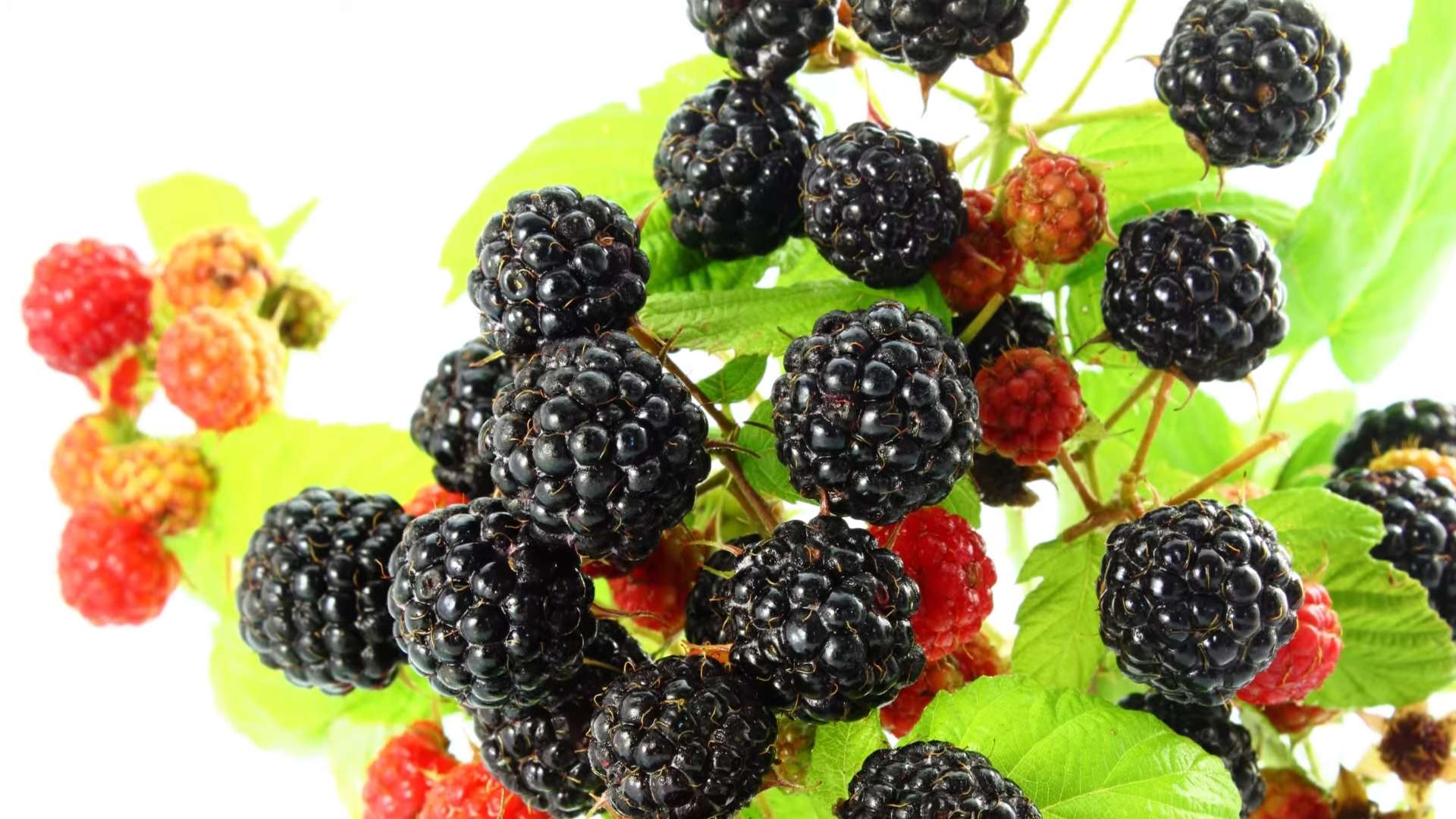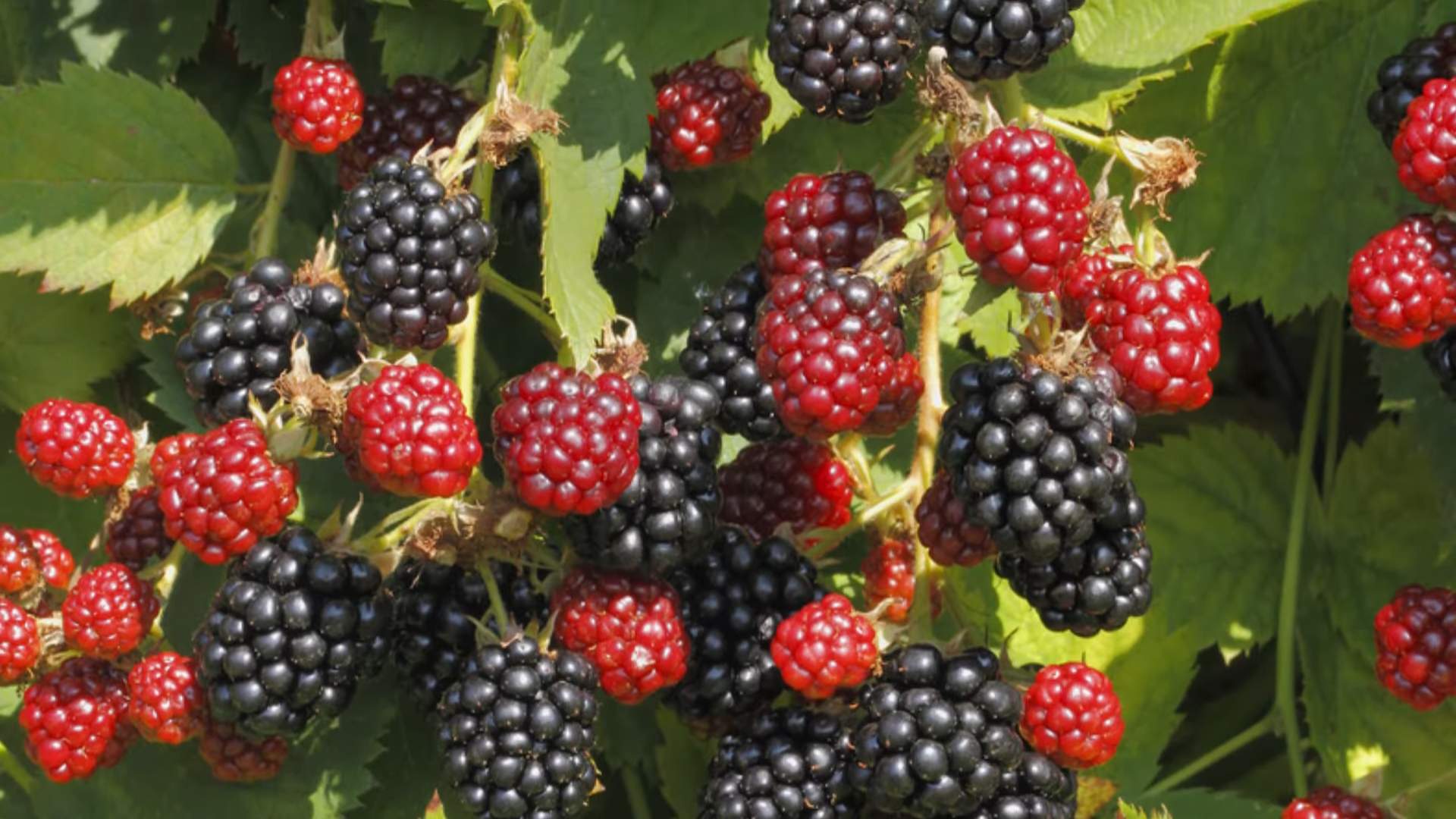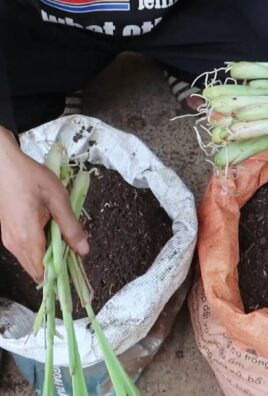Raspberry cultivation at home might sound intimidating, conjuring images of sprawling farms and thorny bushes, but trust me, it’s more achievable than you think! Imagine stepping into your backyard and plucking juicy, sun-ripened raspberries straight from the vine – a taste far superior to anything you’ll find in the grocery store. For centuries, raspberries have been cherished not only for their delicious flavor but also for their medicinal properties, with evidence of their cultivation dating back to Roman times.
But why should you embark on this berry-filled adventure? Well, store-bought raspberries can be expensive and often lack the vibrant flavor of homegrown varieties. Plus, there’s something incredibly rewarding about nurturing a plant from a tiny cane to a bountiful producer. This DIY guide will equip you with simple yet effective tricks and hacks to make raspberry cultivation at home a resounding success, even if you’re a complete beginner. We’ll cover everything from choosing the right variety for your climate to protecting your precious berries from pests, ensuring a plentiful harvest for years to come. So, grab your gardening gloves, and let’s get started!

Growing Raspberries in Your Backyard: A DIY Guide
Hey there, fellow gardening enthusiasts! I’m so excited to share my experience with growing raspberries at home. It’s surprisingly easy, incredibly rewarding, and nothing beats the taste of fresh, homegrown berries. This guide will walk you through everything you need to know, from choosing the right variety to harvesting your delicious bounty. Let’s get started!
Choosing the Right Raspberry Variety
Before you even think about digging, you need to decide which type of raspberry is right for you. There are two main types:
* Summer-Bearing Raspberries: These produce one large crop of berries in the summer, usually in June or July. They require more pruning but often yield a bigger harvest at once.
* Everbearing (or Fall-Bearing) Raspberries: These produce two crops – one in the fall on the current year’s canes and another smaller crop the following summer on the same canes. I personally prefer these because I get a longer harvest season.
Within these two types, there are tons of different varieties. Consider these factors when choosing:
* Climate: Some varieties are better suited for colder climates, while others thrive in warmer regions. Check the plant hardiness zone for your area.
* Berry Color: Raspberries come in red, black, purple, and even yellow! Choose your favorite color and flavor profile.
* Disease Resistance: Look for varieties that are resistant to common raspberry diseases like root rot and cane blight.
* Size: Consider the size of the mature plant. Some varieties can get quite large and need plenty of space.
Some popular and reliable varieties include:
* Red Raspberries: Heritage (everbearing), Latham (summer-bearing), Boyne (summer-bearing, cold-hardy)
* Black Raspberries: Bristol (summer-bearing), Jewel (summer-bearing)
* Purple Raspberries: Brandywine (summer-bearing)
* Yellow Raspberries: Fall Gold (everbearing)
I recommend doing a little research on varieties that are known to do well in your specific area. Your local nursery can also be a great resource for recommendations.
Preparing the Planting Site
Raspberries need a sunny spot with well-drained soil. They prefer slightly acidic soil with a pH between 6.0 and 6.8. Here’s how to prepare your planting site:
* Sunlight: Raspberries need at least 6-8 hours of direct sunlight per day.
* Soil: The soil should be well-draining and rich in organic matter. If your soil is heavy clay or sandy, amend it with compost or well-rotted manure.
* Weed Control: Remove all weeds and grass from the planting area. Raspberries don’t compete well with weeds.
* Spacing: Space raspberry plants 2-3 feet apart in rows that are 8-10 feet apart. This allows for good air circulation and makes it easier to harvest.
Planting Your Raspberry Canes
Now for the fun part – planting! You can purchase raspberry plants as bare-root canes or potted plants. I’ve had success with both.
Step-by-Step Planting Instructions:
1. Soak Bare-Root Canes: If you’re using bare-root canes, soak them in water for 30 minutes to an hour before planting. This will help rehydrate the roots.
2. Dig the Holes: Dig holes that are wide enough to accommodate the roots and deep enough so that the top of the root ball is level with the ground.
3. Plant the Canes: Place the canes in the holes and spread out the roots. For bare-root canes, make a small mound of soil in the center of the hole and spread the roots over the mound.
4. Backfill with Soil: Backfill the holes with soil and gently firm the soil around the canes.
5. Water Thoroughly: Water the newly planted canes thoroughly.
6. Mulch: Apply a layer of mulch around the plants to help retain moisture, suppress weeds, and regulate soil temperature. I like to use wood chips or straw.
7. Prune (if necessary): If you’re planting bare-root canes, prune them back to about 6-9 inches above the ground. This will encourage new growth.
Caring for Your Raspberry Plants
Once your raspberry plants are in the ground, they need regular care to thrive.
* Watering: Raspberries need consistent moisture, especially during dry periods. Water deeply and regularly, especially when the berries are developing.
* Fertilizing: Fertilize your raspberry plants in the spring with a balanced fertilizer. I use a fertilizer specifically formulated for berries. Follow the instructions on the fertilizer package.
* Weeding: Keep the area around your raspberry plants free of weeds. Weeds compete with the plants for nutrients and water.
* Support: Raspberry canes can get quite tall and may need support. You can use a trellis, wires, or stakes to support the canes. I use a simple wire trellis system.
* Pest and Disease Control: Monitor your raspberry plants for pests and diseases. Common pests include aphids, spider mites, and Japanese beetles. Common diseases include root rot, cane blight, and powdery mildew. Treat any problems promptly with appropriate pesticides or fungicides. I prefer to use organic methods whenever possible.
Pruning Your Raspberry Plants
Pruning is essential for maintaining healthy raspberry plants and maximizing berry production. The pruning method depends on whether you have summer-bearing or everbearing raspberries.
Pruning Summer-Bearing Raspberries
Summer-bearing raspberries produce fruit on the previous year’s canes (floricanes). After the canes have fruited, they will die.
1. After Harvest: Immediately after harvest, cut the fruited canes down to the ground. This will encourage new canes (primocanes) to grow.
2. Thinning: In the spring, thin out the remaining canes, leaving only the strongest and healthiest ones. Space the canes about 6-8 inches apart.
3. Tipping: You can also tip the canes in the spring to encourage branching and more fruit production. Cut off the top few inches of the canes.
Pruning Everbearing (Fall-Bearing) Raspberries
Everbearing raspberries produce fruit on the current year’s canes (primocanes) in the fall. They can also produce a smaller crop on the previous year’s canes (floricanes) in the summer.
Option 1: Two Crops
1. After Fall Harvest: After the fall harvest, cut off the top portion of the canes that produced fruit.
2. Spring: In the spring, thin out the remaining canes, leaving only the strongest and healthiest ones. Space the canes about 6-8 inches apart.
3. After Summer Harvest: After the summer harvest, cut the fruited canes down to the ground.
Option 2: One Large Fall Crop (My Preferred Method)
1. Late Winter/Early Spring: In late winter or early spring, cut all the canes down to the ground. This will eliminate the summer crop but result in a larger and earlier fall crop. I find this method easier and more productive.
Harvesting Your Raspberries
The moment you’ve been waiting for! Raspberries are typically ready to harvest in the summer or fall, depending on the variety.
* Ripeness: Raspberries are ripe when they are plump, juicy, and easily pull away from the stem.
* Harvesting: Gently pick the ripe berries and place them in a container. Be careful not to crush the berries.
* Timing: Harvest raspberries in the morning, when they are cool and dry.
* Storage: Raspberries are delicate and don’t store well. Eat them fresh or refrigerate them for a few days. You can also freeze them for longer storage. I love making raspberry jam and freezing it to enjoy all year long.
Dealing with Common Problems
Even with the best care, you may encounter some problems when growing raspberries. Here are a few common issues and how to deal with them:
* Root Rot: Root rot is a fungal disease that can occur in poorly drained soil. To prevent root rot, make sure your soil is well-draining and avoid overwatering.
* Cane Blight: Cane blight is another fungal disease that can cause canes to die. To prevent cane blight, prune out any infected canes and avoid injuring the canes.
* Aphids: Aphids are small, sap-sucking insects that can weaken raspberry plants. To control aphids, spray the plants with insecticidal soap or neem oil.
* Spider Mites: Spider mites are tiny pests that can cause the leaves of raspberry plants to turn yellow and stippled. To control spider mites, spray the plants with insecticidal soap or neem oil.
* Japanese Beetles: Japanese beetles are metallic green beetles that can skeletonize the

Conclusion
So, there you have it! Cultivating your own raspberries at home isn’t just a gardening project; it’s an investment in fresh, flavorful, and healthy eating. We’ve walked you through the essential steps, from selecting the right raspberry variety to providing the ideal growing conditions and tackling potential challenges. The beauty of this DIY approach lies in its control – you know exactly what goes into your raspberries, ensuring they are free from harmful pesticides and bursting with natural goodness.
Why is this DIY raspberry cultivation trick a must-try? Because it empowers you to enjoy the unparalleled taste of homegrown raspberries, picked at their peak ripeness. Store-bought raspberries, while convenient, often lack the intense flavor and sweetness of those grown in your own backyard. Plus, the satisfaction of harvesting your own fruit is an experience that’s hard to beat.
But the journey doesn’t end here! Feel free to experiment with different raspberry varieties to discover your personal favorites. Consider adding companion plants like marigolds or nasturtiums to deter pests naturally. For those with limited space, container gardening is an excellent option, allowing you to enjoy fresh raspberries even on a small balcony or patio. You can also explore different training methods, such as trellising, to maximize your yield and create a visually appealing garden feature.
Don’t be afraid to get creative with your raspberry harvest! Beyond simply enjoying them fresh, raspberries are incredibly versatile. Use them to make delicious jams, jellies, and preserves. Bake them into pies, muffins, and scones. Blend them into smoothies and cocktails. Freeze them for later use in desserts or as a refreshing addition to your summer drinks. The possibilities are endless!
We strongly encourage you to embark on this rewarding adventure of **raspberry cultivation at home**. It’s a project that offers not only delicious fruit but also a connection to nature and a sense of accomplishment. Remember to document your progress, take photos of your flourishing raspberry plants, and share your experiences with fellow gardening enthusiasts. Your insights and tips could inspire others to try their hand at growing their own raspberries.
So, grab your gardening gloves, choose your raspberry variety, and get ready to enjoy the sweet taste of success! We can’t wait to hear about your raspberry-growing journey. Share your tips, triumphs, and even your challenges in the comments below. Let’s build a community of passionate raspberry growers and celebrate the joys of homegrown goodness together! Happy gardening!
Frequently Asked Questions (FAQ)
What is the best time of year to plant raspberries?
The best time to plant raspberries depends on the type of raspberry you’re growing. Generally, fall-bearing (everbearing) raspberries are best planted in early spring, while summer-bearing raspberries are best planted in the fall. This allows the plants to establish their root systems before the extreme temperatures of summer or winter arrive. However, if you live in a region with mild winters, you can plant raspberries in the fall or early winter. Bare-root raspberries should be planted when they are dormant. Container-grown raspberries can be planted at any time during the growing season, provided you water them regularly and protect them from extreme heat or cold.
What kind of soil do raspberries need?
Raspberries thrive in well-drained, slightly acidic soil with a pH between 6.0 and 6.8. The soil should be rich in organic matter, such as compost or well-rotted manure. Avoid planting raspberries in heavy clay soil, as this can lead to root rot. If your soil is heavy or poorly drained, amend it with compost, peat moss, or other organic materials to improve drainage and aeration. Before planting, it’s a good idea to conduct a soil test to determine the pH and nutrient levels. This will help you identify any deficiencies and amend the soil accordingly.
How much sunlight do raspberries need?
Raspberries need at least six to eight hours of direct sunlight per day to produce a good crop of fruit. Choose a planting location that receives full sun, especially during the morning hours. Morning sun helps to dry the leaves and reduce the risk of fungal diseases. If you live in a hot climate, some afternoon shade may be beneficial to prevent the plants from overheating. However, too much shade can reduce fruit production and increase the risk of disease.
How often should I water my raspberry plants?
Raspberry plants need consistent moisture, especially during the growing season. Water deeply and regularly, especially during dry spells. Aim to keep the soil consistently moist but not waterlogged. Overwatering can lead to root rot, while underwatering can stress the plants and reduce fruit production. The frequency of watering will depend on the weather, soil type, and the age of the plants. Young plants need more frequent watering than established plants. A good rule of thumb is to water when the top inch of soil feels dry to the touch.
How do I prune my raspberry plants?
Pruning is essential for maintaining the health and productivity of your raspberry plants. The pruning method depends on the type of raspberry you’re growing. Summer-bearing raspberries produce fruit on the previous year’s canes (floricanes). After harvesting the fruit, prune out the floricanes at ground level. Fall-bearing (everbearing) raspberries produce fruit on the current year’s canes (primocanes). You can either prune all the canes to the ground in late winter or early spring, or you can prune only the top portion of the canes that produced fruit in the fall. If you choose the latter method, the remaining portion of the canes will produce a smaller crop of fruit the following summer. Regular pruning helps to improve air circulation, reduce the risk of disease, and encourage new growth.
What are some common pests and diseases that affect raspberries?
Raspberries are susceptible to a variety of pests and diseases, including aphids, spider mites, raspberry cane borers, raspberry fruitworms, anthracnose, and root rot. Regular monitoring of your plants can help you detect problems early and take appropriate action. Use organic pest control methods whenever possible, such as insecticidal soap, neem oil, or horticultural oil. To prevent fungal diseases, ensure good air circulation around the plants and avoid overhead watering. Remove any diseased canes or leaves promptly to prevent the spread of infection.
Can I grow raspberries in containers?
Yes, you can successfully grow raspberries in containers, especially if you have limited space. Choose a large container with good drainage holes. A 15-20 gallon container is ideal. Use a high-quality potting mix that is well-draining and rich in organic matter. Select a dwarf or compact raspberry variety that is well-suited for container growing. Water regularly and fertilize as needed. Container-grown raspberries may need more frequent watering and fertilization than those grown in the ground.
How do I fertilize my raspberry plants?
Raspberry plants benefit from regular fertilization, especially during the growing season. Apply a balanced fertilizer, such as 10-10-10, in early spring before new growth begins. You can also use a fertilizer specifically formulated for berries. Follow the instructions on the fertilizer label for application rates. Avoid over-fertilizing, as this can lead to excessive vegetative growth and reduced fruit production. You can also amend the soil with compost or well-rotted manure to provide a slow-release source of nutrients.
How long does it take for raspberry plants to produce fruit?
The time it takes for raspberry plants to produce fruit depends on the type of raspberry and the planting method. Summer-bearing raspberries typically produce fruit in their second year after planting. Fall-bearing (everbearing) raspberries may produce a small crop of fruit in their first year, but the main crop will be produced in the fall of the second year. Bare-root raspberries may take longer to establish and produce fruit than container-grown raspberries. With proper care and maintenance, you can expect your raspberry plants to produce fruit for many years to come.





Leave a Comment